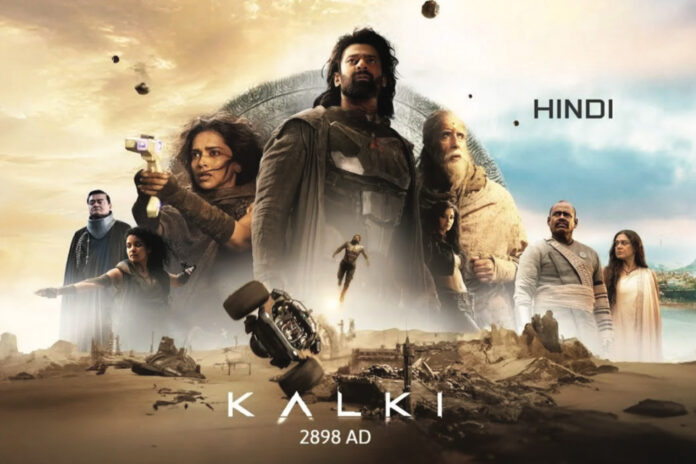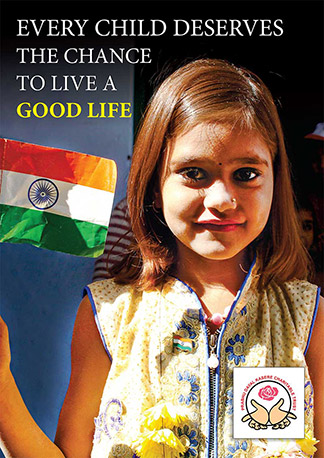Telugu director Nag Ashwin has undertaken one of the most ambitious movie projects in India with Kalki 2898 AD, his Hollywood-style dystopian sci-fi flick with an inherent Indian mythological theme.
Spanning 6000 years, the Prabhas-headlined film also features Amitabh Bachchan, Kamal Haasan, Deepika Padukone and a host of other actors (Mrunal Thakur, Anna Ben, Vijay Deverakonda, Dulquer Salmaan, Brahmanandam, etc) who appear for a few minutes in the over three hour-long saga. While Nag Ashwin has to be commended for his attempt to create a sci-fi tentpole film in Indian cinema, Kalki 2898 AD is definitely not without its flaws.
Influences from overseas
Ashwin has used Hollywood-imported effects to narrate the story of Ashwatthama (from the Mahabharata) 6000 years since the Kurukshetra war and takes us to a future where what’s left of humanity struggles to exist. He has succeeded in making Kalki 2898 AD stand out as far as its visual effects, graphics and cinematography are concerned. No one can find fault with any of these as they are comparable to Hollywood films. Given that DOP and VFX artist Djordje Stojiljkovic, who has worked on dystopian film, Anima, and The Needle, cranked the camera for Kalki, the output is indeed a visual treat, especially for the pan-Indian audience.
What the Mahanati director has also done though is borrow extensively from numerous Hollywood films, like the Mad Max series, The Matrix, Dune, Star Wars, Lord of The Rings, Game of Thrones, Transformers and Marvel films. In fact, I even found shades of web series, Snowpiercer. Ashwin has liberally peppered his film with aspects of these films to make it more enriching and engaging for the audience. But he possibly may have forgotten that the Indian audience is well-versed with such Hollywood content given the prevalence of OTT platforms in the country today. Thus, the images immediately bring the Hollywood references to mind as we watch Kalki.
Coming to the story, the first half of the film sets up the stage for Ashwatthama giving us flashbacks to the Kurukshetra war and then cutting to the dystopian future where only one city exists on the planet. The last city that exists in a world, which has no life form, is Kasi and how Ashwin has envisioned and created it is quite compelling. Kasi is ruled by tyrant Yaskin (Kamal Haasan), who sits inside an inverted pyramid (the Complex as it is called) that hovers over the city. Meanwhile, it is left up to crooked bounty hunters like Bhairava (Prabhas) to try and make money to not just survive but also to get into the Complex where they can lead a more privileged life.
Disjointed story
Unfortunately, the first half of Kalki really lags and is extremely underwhelming. Prabhas comes on screen in style but then resorts to lame jokes with Bujji (Keerthy Suresh) and fighting off comical baddies. No laughs are elicited from the audience for sure. The story moves from Ashwatthama to Bairava to Supreme’s (Kamal Haasan) right-hand man Manas (Saswata Chatterjee) to Supreme then Sumati (Deepika Padukone) … it is exhausting and a struggle to watch this film meander. The sequences appear very disjointed due to a poorly written screenplay and this is a big letdown in the first half.
It’s when we move to the second half that we feel the story really takes off. It is the gripping, solid second half that showcases Ashwin’s directorial genius which was missing pre interval. The pieces fall into place in the second half as the screenplay is more coherent and racier. The main characters connect on screen and it gets more engaging for the audience. Yet, one doesn’t feel any emotional connect to the story – even when you see what’s happening to the pregnant women or people starving to death.
As we know, dystopian films deal with a strong human threat from those in control (in this case Yaskin) but in Ashwin’s film, this theme is not compelling enough. Yasmin appears very briefly and Kamal Hassan’s characterisation is not as fearsome and evil as the director would like us to believe. The reliance seems to more on the other characters in the film rather than the main story and villain. We see numerous actors constantly popping in and out, with some adding absolutely no value to the story. One must also mention the poorly written dialogues – some lines just sound so juvenile that one wonders how Ashwin, who gave us the National Award-winning Mahanati, could have okayed it.
Speaking about performances, Prabhas appears as a macho man who has excellent fighting skills and he has the looks and physique to carry this off. It’s in the romantic portions with Disha Patani that he draws a blank – there is zero chemistry between the pair and it’s a painful watch. Deepika Padukone has been severely under-utilised in this film which is a shame and Kamal Haasan makes a tremendous impact the brief time that he appears. Shobana too as Mariam makes her mark on screen. It is Amitabh Bachchan, however, who is the tallest of them all – his performance as Ashwatthama is fabulous and he holds the frame when he appears on screen. To a great extent, it is Big B’s presence that truly redeems this film.
Nag Ashwin has great creative, visual skills and has an understanding of nativity but the script here takes a beating (i.e. first half). It’s not easy for a director to make a lavish, visual spectacle and be a great storyteller too – and only a handful of Indian directors have achieved that so far, like SS Rajamouli or Shankar. And where taking Indian mythology/ folk tales in a format that emotionally connects with the world is concerned, it’s only directors SS Rajamouli and Rishab Shetty who have been successful till date. Like director Rajamouli has stated many times, a story has to emotionally connect with the audience. While we all must applaud the grandiose manner in which Nag Ashwin has given us the Kalki Cinematic Universe, one also wants the story to resonate with us.
One hopes that with the sequel to Kalki 2898 AD, Nag Ashwin redeems himself and proves once again he is the uber talented director we all know he is.










